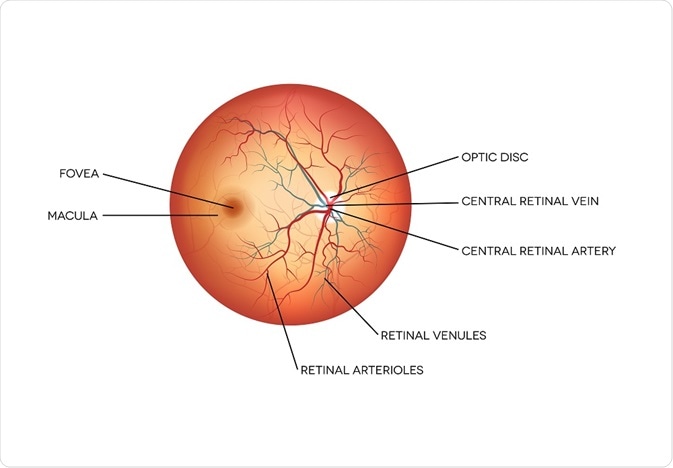The optic disc is the round spot on the retina formed by the passage of the axons of the retinal ganglion cells, which transfer signals from the photoreceptors of the eye to the optic nerve, allowing us to see.
 Tefi | Shutterstock
Tefi | Shutterstock
The optic disc, also known as the optic nerve head, forms a slightly raised spot on the nasal side of the retina. Here, there are no photoreceptors, hence it is known as the blind spot of the eye. The optic disc has a slight cup-shaped depression, called the physiologic cup. The central retinal artery and vein also pass through the retina at this point. Swelling of the optic disc limits vision and can have a significant effect on quality of life.
Causes of optic disc swelling
Swelling of the optic disc can occur in reaction to a variety of insults. The most common causes of swelling include:
- Non-arteritic anterior ischemic optic neuropathy (NA-AION): This condition affects over one third of patients and is characterized by the loss of blood to the optic nerve, resulting in ischemia and cell death.
- Optic neuritis: This condition accounts for just less than one third of pateints, and is caused by inflammation around the optic nerve.
- Intracranial hypertension: Affecting one in six patients, intracranial hypertension occurs when fluid builds up in the brain, putting pressure on the eye.
- Other causes include diseases such as diabetes, where optic disc swelling occurs as a secondary disease.
Unilateral or bilateral swelling
Swelling of the optic disc may be confined to one side (unilateral) or occur on both sides (bilateral) of the retina. Unilateral swelling is observed in the following disorders, among others:
- Demyelinating optic neuritis
- NA-AION
- Compressive optic neuropathy
- Occlusion of the retinal vein
- Diabetic papillopathy
Bilateral swelling of the optic disc may be due to causes such as:
- Papilledema
- Infiltrative neuropathy of the optic nerve
- Toxic optic neuropathy
- Malignant hypertension
Symptoms
Swelling of the optic disc presents with symptoms based on the underlying causative condition. In the majority, therefore, patients complain of a sudden diminution of visual acuity and visual field. Visual field defects in NA-AION are mostly inferonasal in location. Altitudinal field defects, affecting only half of the vertical field of vision, are more common in optic neuritis, but scotomas of different types or an enlargement of the blind spot are also often present.
Pain on eye movement is seen more frequently in optic neuritis, but is typically absent in ischemic neuropathy. In compressive forms of optic neuropathy, various intracranial tumors should be ruled out. A relative afferent pupillary defect is characteristic, but pain is usually absent.
Diagnosis and Treatment
The following signs indicate the presence of non-papilledema optic disc swelling:
- The cupping of the disc is lost
- The margins of the disc are blurred
- No peripapillary hemorrhages are seen
- No infarcts, exudates or edema of the nerve fiber layer
Diagnosis depends on a careful history of symptoms related to intracranial hypertension, other systemic conditions and visual symptoms related to the current episode.
Tests include dilated fundoscopy and imaging findings obtained with fluorescein angiography and optical coherence tomography (OCT). Treatment of optic disc swelling is based on the cause of the condition.
Further Reading
Last Updated: Dec 29, 2022